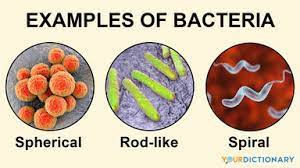Contents
Types of Bacteria
Types of Bacteria – There are many types of bacteria present in the body, but basal bacteria live in the intestines and act as parasites, causing the intestinal environment to be sensitive to normal changes in the body.
The intestinal flora is home to some 22-25% of all the bacteria that exist. These microbes not only help to seed the food we eat to be digestable, but also help us digest undigested food. Certain types of bacteria are vital for our health.Flammatory bowel diseases can result, for example, if a certain type of bacteria in the intestine has been destroyed.
One of the most common forms of bacteria is genus Candida, a genus of yeasts, which is found in the large bowel. It is used by the body to help with the digestion of food, and figured mainly in the fermentation and storage of starch, oil, and sugar. When there is a interference with the production of yeast, trouble can arise with intestinal functions.
What Can Cause Candidiasis?
The cause of candidiasis can vary considerably. In many cases, the cause will be a combination of factors.iotics, prescription drugs, toxins, the use of prescription medications that may have some side effects, deficiencies of energy, and the emotional state of the patient.
The use of antibiotics can cause candidiasis. Most antibiotics that are taken need to be refrigerated for use. The longer they are left in a room, the more bacteria can grow on them. Vitamin E, found in bananas, tomatoes, and apples can also help prevent from getting yeast infections. If a person is sick, more bacteria can be brought in contact with the open wounds taking place, which allows the bacteria to cause an infection.
Good bacteria are always present in the intestines, but for those who have been taking antibiotics or are taking large amounts of antibiotics, they can become depleted in effectiveness. In this case, the body may be unable to react in a timely fashion to problems in the intestines.
Diagnosis of Candidiasis
If you are experiencing chronic rashes, Cyclingomycosis can be diagnosed through a microscopic examination of items such as mucus, breath, and stool. A culture is done to see if the Candida yeast is present and is then confirmed through lab work.
Another diagnostic procedure is an endoscopy of the mouth and throat. Candida yeast is often present in the mouth and the throat, so this procedure allows physicians to not only see where the yeast is, but what part of the body it is living in.
Treatment of Candidiasis
The goal of treatment is to restore the proper balance of bacteria in the body so that it can prevent the yeast from spreading. If the proper balance can not be effected, pharmaceutical drugs are sometimes prescribed.
Often times, a diet change or the use of antimicrobial products will result in the yeast being flushed out of the body. The process can take months, and sometimes need to be continued for several weeks.




